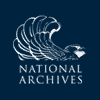General Orders, 18 October 1779
General Orders
Head-Quarters Moores-House [West Point]
Monday Octr 18th 1779.
Parole Sullivan— C. Signs Success. Seneca—
The Commander in Chief is happy in the opportunity of congratulating the Army on our further successes—By advices just received, Colonel Brodhead with the Continental troops under his command and a body of Militia and Volunteers has penetrated about one hundred and eighty miles into the Indian Country lying on the Allegany River—burnt 10 of the Muncy and Seneca towns in that quarter containing 165 houses—destroyed all their fields of corn, computed to comprehend 500 acres besides large quantities of vegetables—obliging the savages to flee before him with the greatest precipitation & to leave behind them many skins and other Articles of value—The only opposition the savages ventured to give our troops on this occasion was near Cuscushing: About 40 of their Warriors on their way to commit barbarities on our frontier settlers were met here by Lieutt Hardin of the 8th Pennsylvania regiment at the head of one of our advanced parties composed of 23 men, of which 8 were of our friends of the Delaware Nation, who immediately attacked the savages and put them to the route with the loss of five killed on the spot, and of all their Canoes, blankets, shirts and provisions of which as is usual for them when going into action, they had divested themselves, and also of several arms—Two of our men and one of our Delaware friends were very slightly wounded in the action which was the only damage we sustained in the whole enterprise.1
The Activity, Perseverance and Firmness which marked the conduct of Colonel Brodhead and that of all the officers and men of every description in the expedition do them great honor, and their services fully intitle them to the thanks and to this testimonial of the General’s acknowledgments.
Special Orders.
Captain Seldon of the Light-Infantry being recovered of the wound he received in the assault of Stony-Point & having expressed his wishes to join the Light Infantry again; it is the Commander in Chief’s pleasure that he resume his command in that corps and Captain Perkins who was appointed to act on account of Captain Seldon’s indisposition will rejoin his own regiment.2
Varick transcript, DLC:GW.
1. For Col. Daniel Brodhead’s report of his expedition up the Allegheny River, see Brodhead to GW, 16–24 September.
2. Ezra Selden (d. 1784), of Lyme, Conn., joined the 6th Connecticut Regiment as a sergeant in May 1775, and in January 1776 he transferred to the 10th Continental Regiment as a lieutenant. Selden became adjutant of the newly formed 1st Connecticut Regiment in January 1777. In January of the following year, he received promotion to captain. Assigned to the Connecticut light infantry regiment commanded by Col. Return Jonathan Meigs in July 1779, Selden was severely wounded in the light infantry’s assault on Stony Point, N.Y., on the night of 15–16 July. He transferred to the 4th Connecticut Regiment in January 1781 and to the 3d Connecticut Regiment in January 1783. Selden left the army in June 1783.
Ebenezer Perkins (d. 1831), of Norwich, Conn., served as a sergeant in the Lexington Alarm of April 1775, joined the 8th Connecticut Regiment as a sergeant in July of that year, and, in September 1775, he received a commission as an ensign in the regiment. He transferred to the 17th Continental Infantry Regiment as a lieutenant in January 1776. In January 1777, he transferred to the newly organized 1st Connecticut Regiment as a first lieutenant. Perkins became a captain in January 1778 and left the army in July 1780.

![University of Virginia Press [link will open in a new window] University of Virginia Press](/lib/media/rotunda-white-on-blue.png)
